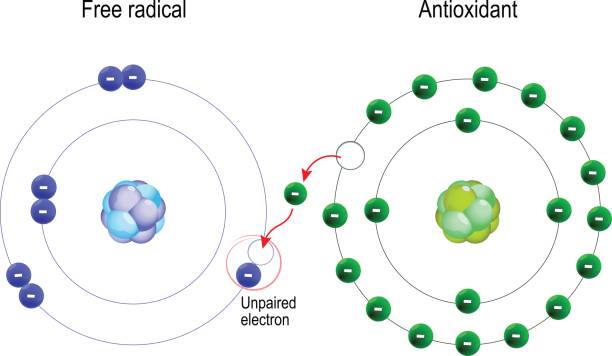
Vitamin C & E: Stronger Together!
The human body comprises more than 30 trillion cells that face daily threats whether that be an infection attack from a virus or the lack of nutrition from our dietary consumption. The cells are also susceptible to damages from high levels of free radicals that are generated by our own body.
Free Radicals
Free radicals are inevitable by-products produced from converting food into energy for the body. They can also be formed from exposure to UV rays from the sunlight, air pollution or even after a short run of exercising. The free radicals steal electrons from surrounding molecules or cells, altering their function or structure. The damage from the free radicals can even change the information coded in our DNA. A chronic overload of free radicals can cause oxidative stress, leading to chronic diseases such as cardiovascular diseases, eye diseases and cancer.

Antioxidant Vitamins C & E
To protect our cells, the body neutralizes the free radical attacks by using antioxidants extracted from our food. Antioxidants counteract oxidative stress by interacting with the free radicals and stabilizing them by donating their electrons, preventing further cell damage. The most well-known dietary sources for antioxidants are vitamin C and vitamin E.
Vitamin C, also known as ascorbic acid, can be obtained from consuming citrus fruits such as oranges and grapefruits. This vitamin scavenges harmful free radicals leaving the ascorbyl radical, which is relatively stable and unreactive. Vitamin E can be found in vegetable oils and grains. They interact with free radicals at high rates and interrupt the radical chain, preventing further oxidation.
Synergistic Effect of vitamin C and vitamin E
While vitamin C and vitamin E are effective defenders of the free radicals by themselves, studies have discovered that the combination of vitamins can be more beneficial for human health. The synergistic effect of these antioxidant vitamins is highly effective in inhibiting oxidative stress.
Vitamin E is a lipid-soluble vitamin that acts as the primary antioxidant by scavenging and interacting with the free radicals, preventing them from damaging the cells. This interaction results in vitamin E becoming a free radical itself. The vitamin C in the formulation then reacts and stabilizes the vitamin E into a stable molecule again. The interaction of vitamins C and E has led to the creation of the ‘vitamin E recycling’ theory, in which the antioxidant function of oxidized vitamin E can be continuously restored by other antioxidants. However, the cycle depends on the supply of antioxidants and the capability of the cell’s metabolic activity.
In addition, vitamins C and E also help improve our body’s immune system. Vitamin C is generally known as a booster for our immune system. It helps maintain our skin’s health and stimulates the immune system by promoting cell growth. Vitamin E also supports our body’s immune system by helping in the production of immune cells, specifically T-cells. T-cells are essential immune cells that target infected host cells and regulates the body’s immune response.
References:
Min, Y. N., Niu, Z. Y., Sun, T. T., Wang, Z. P., Jiao, P. X., Zi, B. B., … Liu, F. Z. (2018). Vitamin E and vitamin C supplementation improves antioxidant status and immune function in oxidative-stressed breeder roosters by up-regulating expression of GSH-Px gene. Poultry Science, 97(4), 1238–1244. doi:10.3382/ps/pex417
Traber, M. G., & Stevens, J. F. (2011). Vitamins C and E: beneficial effects from a mechanistic perspective. Free Radical Biology and Medicine, 51(5), 1000-1013.
Rall, L. C., & Meydani, S. N. (1999). Vitamin E, Vitamin C, and Immune Response: Recent Advances. Military Strategies for Sustainment of Nutrition and Immune Function in the Field. https://www.nap.edu/read/6450/chapter/20
